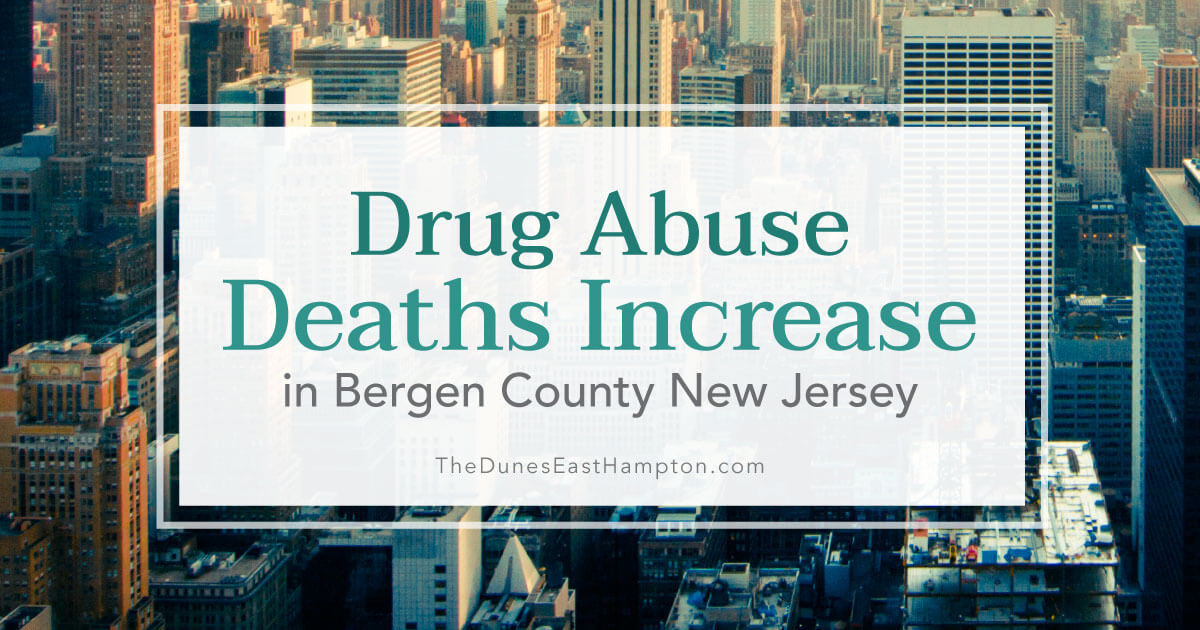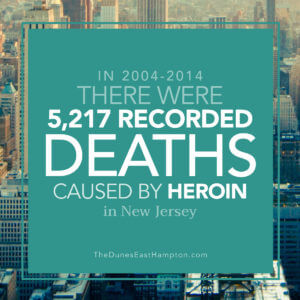
Substance abuse is a nationwide issue, and each state has unique challenges in facing this ongoing epidemic. Over the past decade, drug abuse deaths and overdoses have become the leading cause of accidental deaths in the nation. While many illicit drugs are addictive and result in devastating losses, the most common culprit of drug abuse deaths is opioids, particularly ones legally available with a prescription.
The Opioid Crisis in Bergen, County, New Jersey
Bergen County’s biggest drug issue is heroin. Between 2004 and 2014, there were 5,217-recorded drug abuse deaths caused by heroin in New Jersey. 302 of those deaths happened in Bergen County. Heroin is relatively inexpensive, widely available, and has brought terrible consequences upon New Jersey communities. In 2014 alone, there were 781 heroin-related deaths in the state, and roughly 54% of those drug abuse deaths were people under 40 years old. Additionally, there were more than 52,000 drug-related arrests in New Jersey in 2014.
Bergen County, NJ and Naloxone
New Jersey is seeing increases in heroin overdoses every year, and Bergen County has been part of that increase. Considering its size – with a population under 1,000,000 – this epidemic has hit the community hard. Most people who live in Bergen County are connected to someone who has been affected by this growing endemic.
Consider though, that even with more than 300 deaths, overdoses are much larger concern. In fact, in 2015, police used Naloxone to stop at least 170 people from dying of opioid overdoes. This drug has been a lifesaver for people who overdose in the area – and the community is grateful for it – but that doesn’t stop the cycle of addiction for those living in the area. Most users go from the hospital clinical services back to using within a day’s time.
Strategies to Combat Opioid Addiction
 Because Bergen County, NJ is such a high-risk area, the health care community and those in law enforcement are taking steps to combat this growing crisis with a Recovery Coach program. Through this program, professionals send recovering addicts to the bedsides of those in the hospital who have been given Naloxone for resuscitation.
Because Bergen County, NJ is such a high-risk area, the health care community and those in law enforcement are taking steps to combat this growing crisis with a Recovery Coach program. Through this program, professionals send recovering addicts to the bedsides of those in the hospital who have been given Naloxone for resuscitation.
Acting as coaches, recovering addicts become mentors for those who have reached a crisis point, encouraging them to find addiction treatment programs.
With $7,500 of seized assets, former Bergen County Prosecutor, John Molinelli, begun a program to train potential recovery coaches who are found through Children’s Aid and Family Services, CAFS. Through the program, coaches complete 30 hours of training and must devote at least two 24-hour windows a month to be on a call. When someone arrives in the ER after being revived with Naloxone, a coach is sent to connect with the patient and offer treatment options. He or she will follow up by phone for two months following the hospital visit.
The Recovery Coaching System In-Action
Recovering addicts understand something crucial to finding a path to wellness – no one can do it alone. As one Bergen County coach explained, their job as a coach is to offer hope. The 34-year-old woman, who chose not to reveal her identity to the public, understands the process. She has been in recovery from crack and heroin for 18 months, has a job, some financial stability, and has repaired lost relationships with friends and family. Her life is hopeful now, and she wants to explain to others that there is a path to recovery.
Bergen County Prosecutor, Gruber S. Grewal, explains how these coaches can help break the cycle of addiction in which the county finds itself stuck. When addiction rates go down, quality of life will go up, as crimes fuel the drug industry.
Bergen County’s recovery program is based on similar coaching programs in Ocean and Monmouth counties. Those programs are funded by state grants at $255,700. Bergen County has much less to work with, but health professionals and law enforcement are hopeful about their success.
Curbing Drug Abuse Deaths in Bergen County
Ultimately, curbing the drug abuse abuse deaths in Bergen County and the rest of New Jersey depends on awareness, advocacy, education, and drug addiction treatment access. Hopefully, the new CFAS initiative and increased awareness about the dangers of substance abuse – particularly opioids – will curb the rates of addiction and overdose deaths in Bergen County and the rest of the state.







